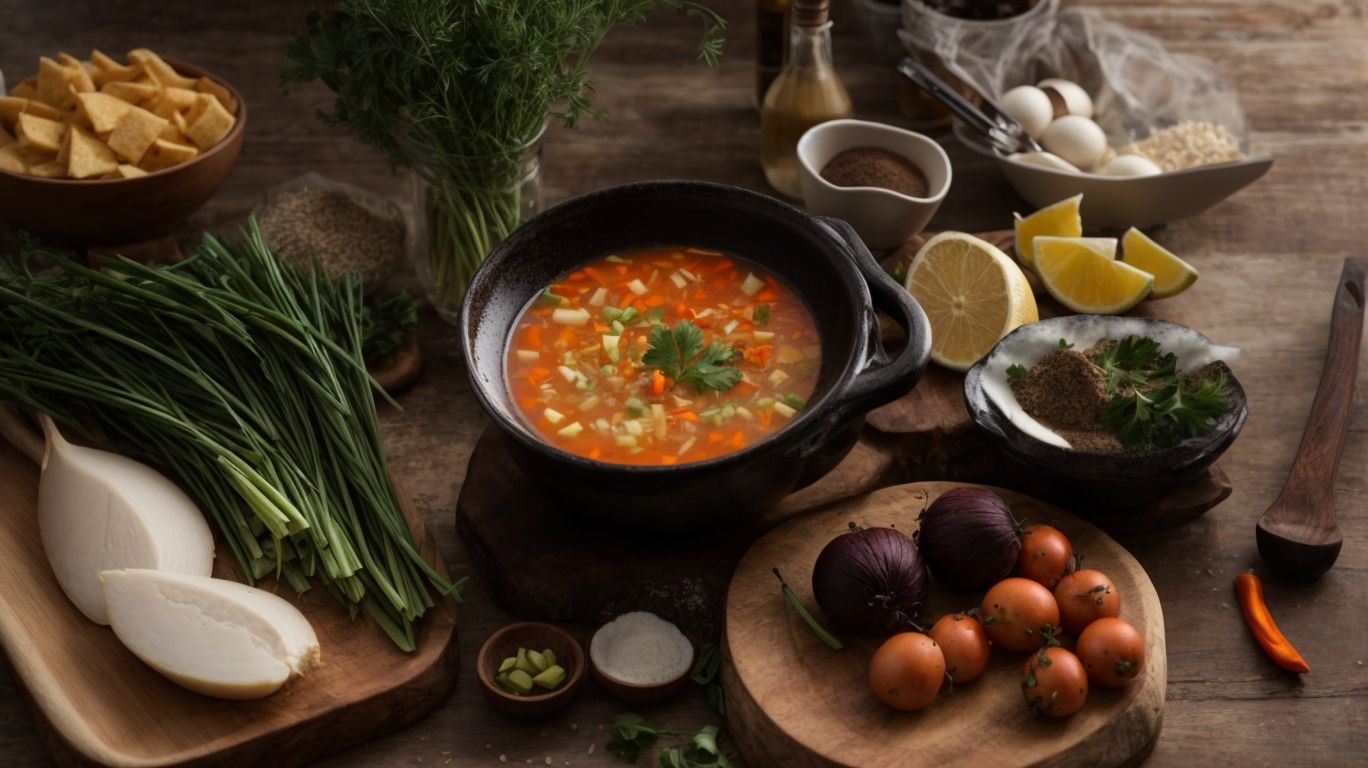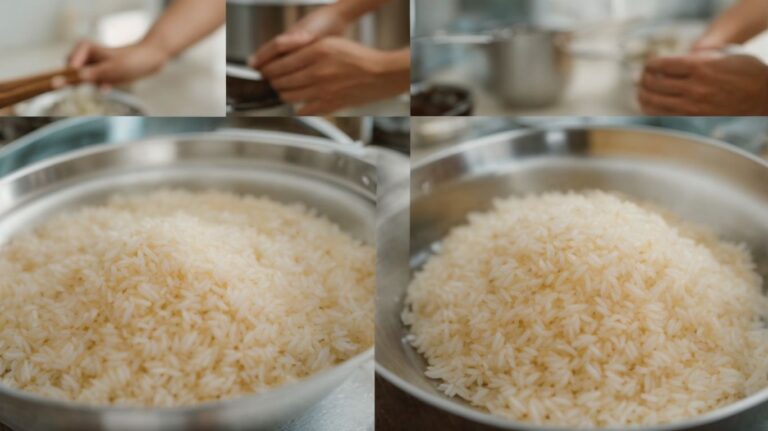How to Cook Nsala Soup?
Looking to spice up your culinary skills with a traditional African dish? Nsala Soup is the answer!
Discover the delicious flavors of Nsala Soup, its essential ingredients, and step-by-step instructions on how to prepare this mouthwatering dish.
Learn how to prepare the meat and fish, create the perfect stock, and add the freshest vegetables. Get expert tips on cooking and serving Nsala Soup with traditional side dishes.
Join us as we dive into the world of Nsala Soup together!
Key Takeaways:
What is Nsala Soup?
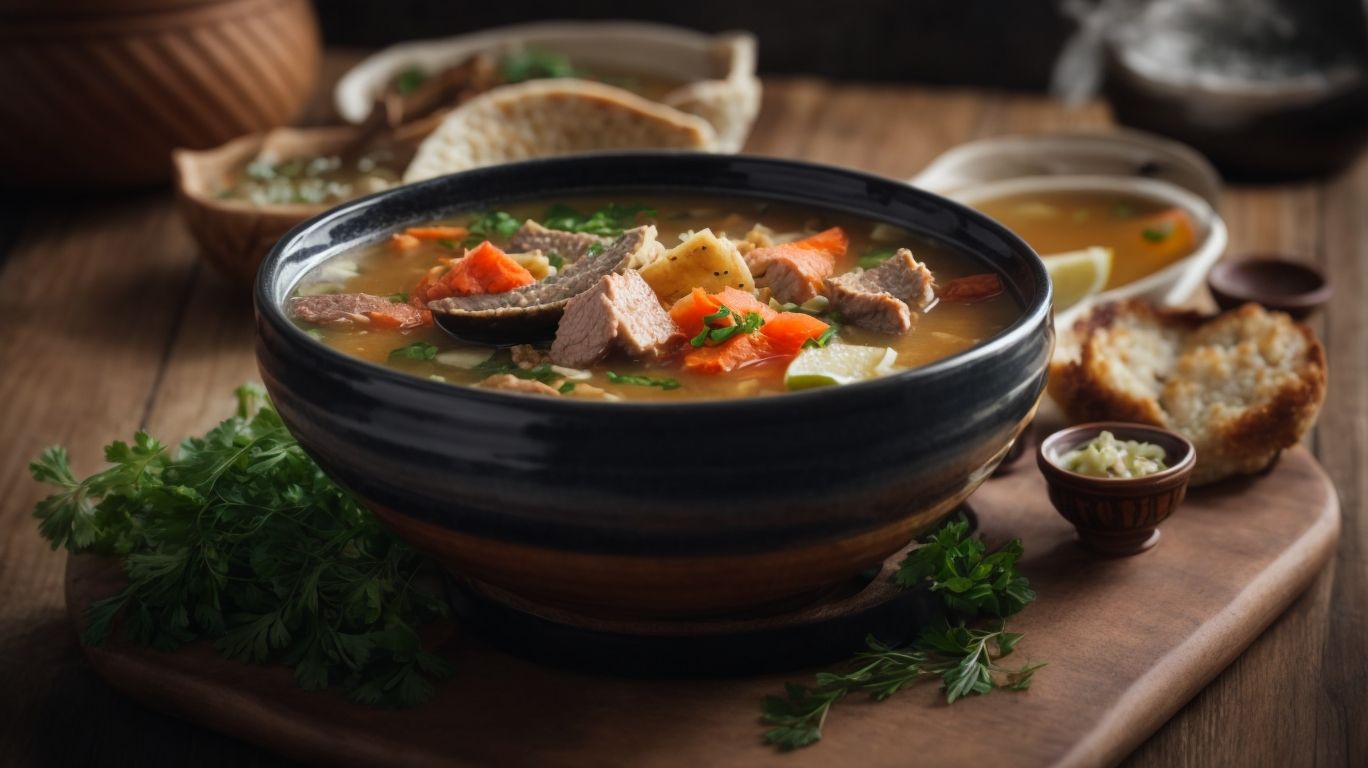
Credits: Poormet.Com – Steven Nelson
Nsala Soup, also known as White Soup, is a traditional Nigerian delicacy hailing from the eastern tribe, characterized by its light color and unique taste.
This savory dish holds significant cultural value in Nigerian communities, often prepared during special occasions, ceremonies, and festivities. To create this flavorsome soup, a blend of fresh fish, choice meat cuts, aromatic spices, and yam powder as a thickening agent is essential. The preparation method involves a meticulous process of simmering the ingredients in a broth until they combine seamlessly, producing a delectable, creamy texture.
A distinctive feature of Nsala Soup is the incorporation of Uziza seeds, known for their peppery flavor and aromatic essence, enhancing the overall taste profile. These seeds are ground and added towards the end of the cooking process, infusing the soup with a delightful warmth and depth of flavor.
Ingredients for Nsala Soup

Credits: Poormet.Com – Kenneth Miller
To prepare Nsala Soup, gather essential ingredients such as yam, catfish, goat meat, Uziza seeds, ground pepper, seasoning, and onions.
When making Nsala Soup, it’s crucial to source high-quality yam, prized for its subtle sweetness and creaminess that thickens the soup. The catfish should be fresh and preferably from clean waters to enhance the soup’s rich flavor profile. Select tender pieces of goat meat, as they will add a hearty depth to the dish.
Uziza seeds, with their peppery, aromatic flavor, are a signature ingredient that infuses the soup with a unique taste. Quality ground pepper, whether fresh or dried, provides the right level of heat to balance the other flavors.
- Ensure the seasoning is well-balanced, using a blend of salt, bouillon cubes, and any preferred spices to enhance the overall taste.
- Onions, when sautéed to a golden hue, bring a caramelized sweetness that complements the savory elements of the soup.
Meat
When preparing Nsala Soup, the meat component, particularly goat meat, serves as a crucial protein source that is boiled to perfection.
Boiling the goat meat is a fundamental step in creating a rich and flavorful Nsala Soup. The process of boiling the meat allows it to become tender, enabling the flavors to infuse into the broth. This tenderization also ensures that the meat complements the overall texture of the soup, creating a harmonious blend of flavors.
Various techniques can be employed in the preparation of the goat meat, such as marinating it with spices before boiling or directly boiling it with minimal seasoning. Each method impacts the taste and texture of the meat and subsequently the soup. Marinating the goat meat can add depth and complexity to the flavors, while simply boiling it can result in a cleaner, more subtle taste.
Fish
In Nsala Soup, the inclusion of whole catfish and dried fish adds a distinctive seafood flavor and enhances the overall richness of the dish.
Whole catfish and dried fish are essential components in Nsala Soup, contributing not only to its unique taste but also bringing a wealth of nutritional benefits to the dish. Catfish, with its tender flesh and delicate flavor, infuses the soup with a subtle sweetness that complements the other ingredients. Meanwhile, the dried fish introduces a deeper umami undertone, adding layers of complexity to the overall flavor profile.
Regarding seasoning techniques, the key lies in the careful balance of traditional spices such as utazi leaves, uziza seeds, and crayfish, which work harmoniously to enhance the natural flavors of the fish. These ingredients are combined with aromatic stockfish and seasoned with a touch of authentic palm oil to create a luscious and satisfying broth that envelops the fish in savory goodness.
Spices and Seasonings
The flavors of Nsala Soup are enhanced by a blend of spices and seasonings, including pepper, seasoning, onions, and aromatic Utazi leaves.
Pepper plays a crucial role in adding a kick of heat and depth of flavor to Nsala Soup. It not only provides a spicy note but also balances the taste profile by complementing other ingredients.
Onions, on the other hand, bring a sweet undertone and subtle richness to the soup. Their flavor intensifies as they simmer, creating a savory base that ties all components together.
Adding Utazi leaves introduces a refreshing and slightly bitter note, enhancing the overall aroma of the dish. Their unique taste elevates the soup, making it a delightful culinary experience.
Vegetables
Utazi leaves, a staple vegetable in Nsala Soup, contribute a distinctive flavor profile and nutritional value to this traditional Nigerian dish.
Aside from Utazi leaves, other vegetables play a crucial role in enriching the Nsala Soup with their vibrant flavors and varied textures. Vegetables like spinach, onions, and bell peppers not only add freshness and color to the dish but also enhance its nutrient content, making it a wholesome meal option.
When preparing these vegetables for Nsala Soup, it is important to ensure they are washed thoroughly and chopped finely to allow them to blend seamlessly into the broth. The combination of these vegetables not only impacts the taste profile of the soup but also contributes to its visual appeal, creating a balanced and visually enticing culinary experience.
How to Prepare Nsala Soup
Preparing Nsala Soup involves a series of steps that include blending ingredients, thickening the soup, boiling to perfection, and creating a flavorful stock base.
After blending the core ingredients such as catfish, Utazi leaves, crayfish, and seasoning cubes, the next crucial stage is achieving the right consistency through a careful thickening process. This involves using grounded yam, cocoyam, or a mixture of both to add depth and thickness to the soup.
During the cooking process, it’s essential to allow the flavors to infuse properly by simmering the mixture over low heat. This slow cooking technique helps develop the rich taste profile that Nsala Soup is known for, enhancing the overall dining experience.
In parallel, creating a robust stock base by boiling the fish, spices, and vegetables together not only imparts depth but also ensures a harmonious blend of flavors that tantalize the taste buds.
Preparing the Meat
One key step in preparing Nsala Soup is incorporating poundo yam or pounded yam to thicken the soup and enhance its texture.
While traditionally prepared with pounded yam, modern variations have introduced different yam variants like yam flour or yam slices to achieve varying consistencies in Nsala Soup. The choice of yam variant impacts the overall thickness and smoothness of the soup; pounded yam typically results in a velvety, creamy texture, while yam flour may yield a slightly thicker consistency. Experimenting with different yam forms allows for customization based on personal preference.
Preparing the Fish
When preparing Nsala Soup, sourcing fish from riverine areas enhances the authenticity and flavor profile of the dish, especially when incorporating dried fish.
Fish from riverine environments tend to have a distinct taste and texture due to the natural elements they are exposed to, which enriches the overall culinary experience. To prepare dried fish for Nsala Soup, it is crucial to clean and descale the fish properly before cutting it into appropriate sizes. After cutting, the fish is traditionally sun-dried or smoked to intensify its flavors.
When integrating dried fish into Nsala Soup, ensure that it is added during the simmering process to allow the flavors to infuse properly. The dried fish adds a rich umami taste that complements the lightness of the soup, creating a harmonious balance of flavors.
Making the Stock
Crafting a flavorful stock for Nsala Soup involves pounding crayfish, blending ingredients, and utilizing a mix of traditional tools like mortar and pestle or modern appliances like blenders.
Regarding the traditional method, the pounding of crayfish is a crucial step that unlocks the rich flavors of the seafood. The rhythmic motion of the pestle against the mortar helps to release the oils and essence of the crayfish, adding depth to the stock. The blending process in traditional preparation involves hand-grinding other spices and herbs to create a harmonious blend.
In contrast, modern techniques offer convenience and efficiency. Using a blender can significantly speed up the process without compromising the quality of the stock. Modern blenders are versatile tools that can effortlessly pulverize ingredients, producing a smooth and well-emulsified base for the Nsala Soup.
Adding the Vegetables
Incorporating Utazi leaves and other vegetables into Nsala Soup adds layers of flavor, freshness, and nutritional value, enriching the overall culinary experience.
When preparing Nsala Soup, the timing and technique of adding these vegetables play a crucial role in enhancing the dish. Utazi leaves, with their distinct bitter flavor, should be added towards the end of the cooking process to maintain their potency without overpowering the soup. They contribute a unique taste that complements the rich broth, creating a well-balanced flavor profile.
Vegetables not only impact the taste but also the visual appeal of the dish. The vibrant colors and textures of vegetables like bell peppers, carrots, and Utazi leaves add a pop of freshness to the traditionally white soup, making it visually enticing.
These vegetables bring a host of nutritional benefits to the table. Utazi leaves are rich in vitamins and antioxidants, offering a healthy boost to the meal. By adding a variety of vegetables, you can enhance the nutritional content of the soup, making it a wholesome and nourishing option for your next meal.
Tips for Cooking Nsala Soup
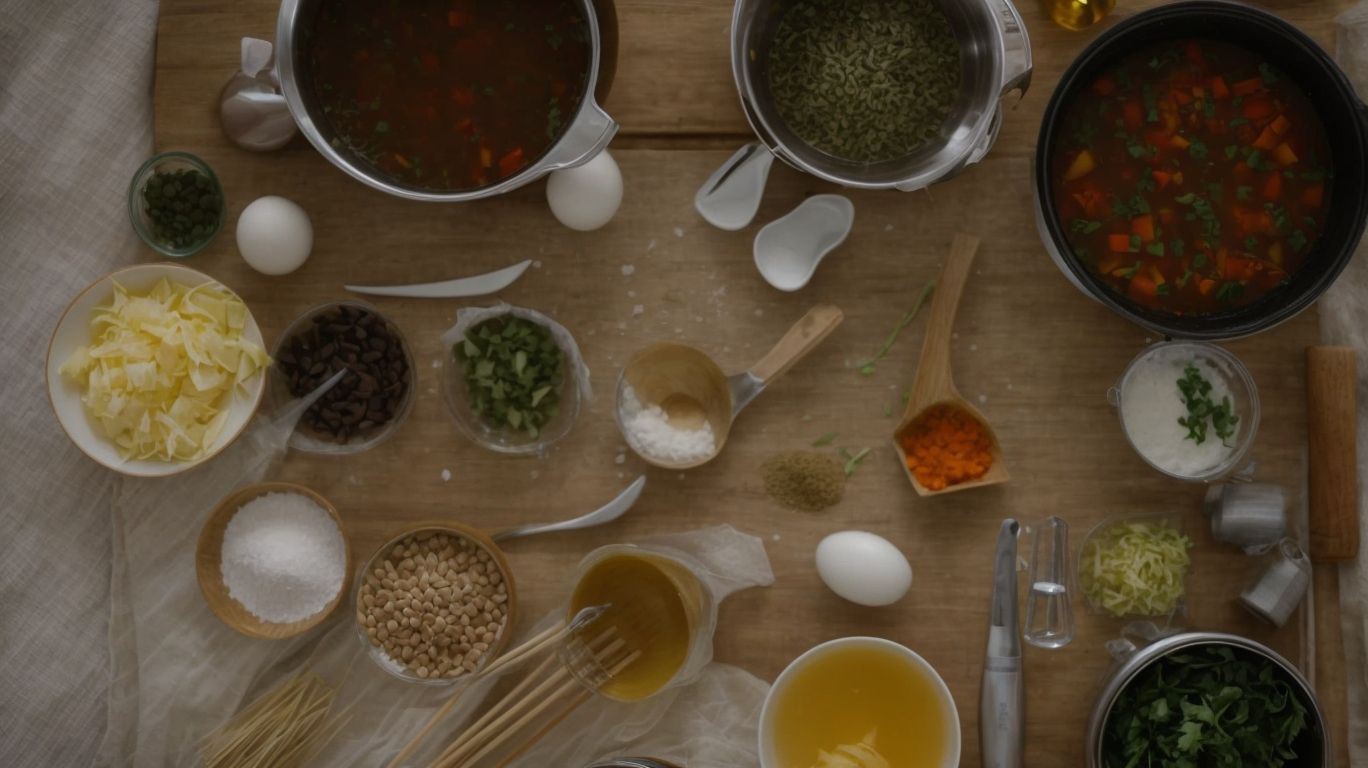
Credits: Poormet.Com – Tyler Johnson
Achieving a delicious Nsala Soup requires attention to detail, use of authentic ingredients, and a touch of creativity with additional flavorful components.
When aiming to enhance the taste profile of Nsala Soup, consider experimenting with ingredients like uziza leaves or scent leaves for a unique twist. These additions can add depth and complexity to the traditional flavors of the soup.
Another tip is to roast or grill your meats before adding them to the broth, infusing them with a smoky richness that complements the soup’s light flavors.
Use Fresh Ingredients
For a truly delightful Nsala Soup experience, prioritize the use of fresh, high-quality ingredients that enhance the dish’s flavors and aromas.
Using fresh ingredients is the cornerstone of creating an authentic and mouthwatering Nsala Soup. High-quality ingredients not only elevate the taste but also contribute to the overall visual appeal of the dish. The freshness of the vegetables, such as Ugwu leaves and Utazi, adds a vibrant green hue and robust flavors. Opt for plump, firm catfish and crayfish for a rich, seafood essence that permeates the broth. To maintain the freshness of your ingredients, store perishables like meats in airtight containers in the refrigerator and ensure proper ventilation for leafy greens. By selecting the freshest components, you can ensure that your Nsala Soup bursts with flavor and authenticity.
Adjust the Spices to Your Taste
Customizing the spice levels in Nsala Soup allows you to tailor the dish to your preferred taste profiles, creating a personalized culinary experience.
When adjusting the spice levels in Nsala Soup, it’s essential to understand the impact each spice has on the overall flavor. Start by tasting the broth and spices as they simmer, allowing you to gauge the current intensity. To enhance the heat, consider adding more spices such as:
- pepper flakes or fresh chilies
- cayenne pepper for a spicy kick
- black pepper for a bold flavor
For a milder version, you may opt to reduce the amount of spices or balance them with a splash of coconut milk for creaminess.
Serve with Traditional Side Dishes
Pairing Nsala Soup with traditional side dishes like pounded yam or fufu enhances the dining experience, creating a delightful combination of flavors and textures.
Adding these side dishes not only provides a satisfying balance to the light, spicy broth of the Nsala Soup but also reflects the authenticity and depth of Nigerian cuisine.
The starchy base of pounded yam or fufu complements the rich, flavorful broth of the soup, offering a complete and fulfilling meal that captures the essence of traditional Nigerian dining.
Conclusion
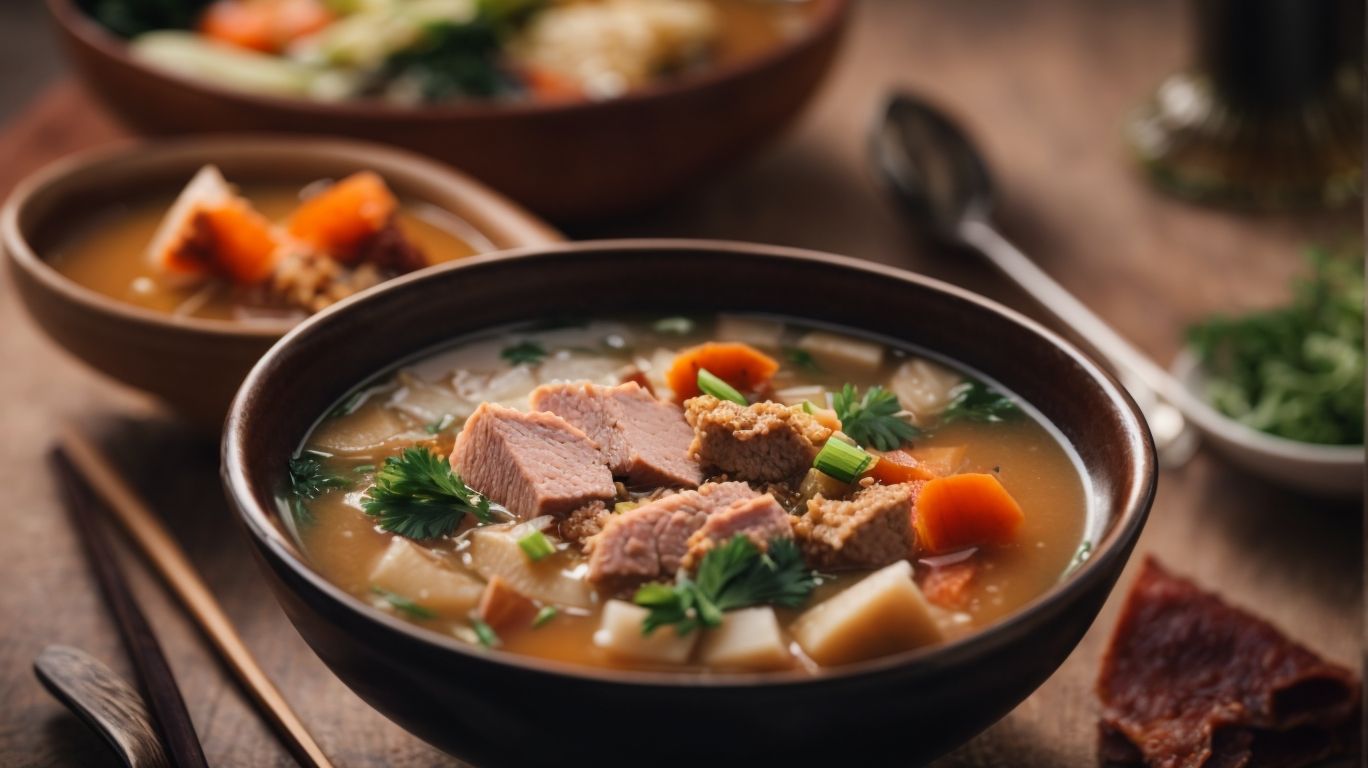
Credits: Poormet.Com – Anthony Hall
Nsala Soup stands out as a delightful Nigerian delicacy known for its authentic flavors, traditional preparation methods, and culinary richness.
Nsala Soup, also referred to as “White Soup,” plays a significant role in Nigerian culture, often symbolizing warmth, hospitality, and celebration. Made primarily with fresh fish, traditional herbs, and spices, this soup embodies the essence of Nigerian culinary heritage.
Its distinct taste, created by the combination of Utazi leaves, pepper, and local seasonings, captures the essence of Nigerian cuisine. The simplicity of its ingredients belies the complexity of its flavors, making it a favorite among locals and a must-try for visitors exploring the vibrant Nigerian food scene.
Frequently Asked Questions
How to Cook Nsala Soup?
To cook Nsala Soup, you will need ingredients like catfish, utazi leaves, pepper, crayfish, and palm oil. You will also need a mortar and pestle, a pot, and a wooden spoon. Follow the step-by-step instructions to make a delicious Nsala Soup.
Can I use frozen catfish to make Nsala Soup?
Yes, you can use frozen catfish to make Nsala Soup. Just make sure to thaw it before cooking and remove any excess water before blending it.
Do I need to add salt to Nsala Soup?
No, you do not need to add salt to Nsala Soup as the utazi leaves provide a natural salty taste. However, you can add a pinch of salt if desired.
Can I substitute palm oil with another type of oil?
Traditional Nsala Soup is made with palm oil, but you can substitute it with any neutral-tasting oil like vegetable or canola oil. Keep in mind that it may alter the taste slightly.
How long does it take to cook Nsala Soup?
It typically takes about 40-45 minutes to cook Nsala Soup from start to finish. The cooking time may vary depending on the type of stove and the size of the catfish.
Can I freeze Nsala Soup?
Yes, you can freeze Nsala Soup for up to 3 months. Just make sure to cool it down completely before transferring it to an airtight container and placing it in the freezer. Thaw it in the refrigerator before reheating and serving.

